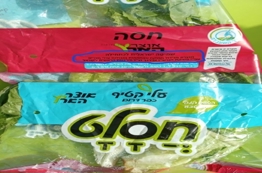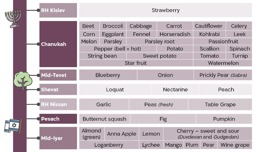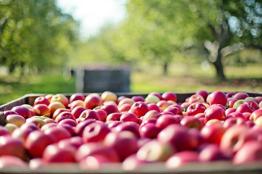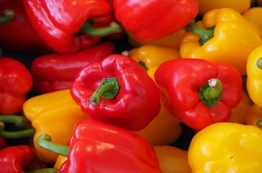Arba Minim in the Eighth Year

How can we buy the arba minim on a year after shemitah? What should I do with an Etrog that has Kedusha? Rav Netanel Oyerbach answers
Download the pdf file here.
Buying and Selling
- While it is true that shemitah produce is permitted to eat even if not rendered ownerless or if forbidden work was performed on its behalf (shamur and ne'evad, respectively), to avoid helping wrongdoers it is best to purchase arba minim from those who grew it in a permissible fashion. That is, either through otzar beit din or heter mechirah.
- It is preferable to buy an etrog with kedushat shevi'it since the mitzvah of safeguarding kedushat shevi'it was performed with it.
- When purchasing an etrog from otzar beit din it is important to avoid transgressing the prohibition of transaction with kedushat shevi'it produce (isur sechorah). For this reason, check for the following:
- The etrog was grown in an orchard with halachic supervision and the agricultural activities were performed under the instruction of a beit din (rabbinical court). So too, distribution is performed under the beit din's guidance.
- The vendors are supposed to be agents of the beit din. This year it is best to buy the arba minim in places authorized as beit din agents (they should have a certificate stating that they are agents of a particular beit din).
- It is best to buy the entire set together, so a price is not given for the etrog separately (havla'ah); according to the opinions that the hadas also has kedushat shevi'it, they should be purchased in this way as well.
- If purchasing an etrog only, it is best to buy it in a closed box. In this way, the etrog is not selected according to its quality, which is similar to a transaction.
- Ensure that the etrog's price does not exceed the price set by the otzar beit din.
- Etrogim imported from outside of Israel should not be sold in the regular manner either, rather together (havla'ah) with a lulav. Some are lenient and allow purchase as usual, but it is problematic to rely on this leniency.[1]
Kedushat shevi'it for the arba minim
- Lulav, aravah, and hadas do not have kedushat shevi'it (hadas according to most opinions). They have no special guidelines and may be exported as usual.
- Etrog
- Etrogim harvested during the shemitah year have kedushat shevi'it. They may be used in the regular manner and not directly spoiled.
- Etrogim that began to develop during shemitah and were harvested after Rosh Hashanah 5783 have kedushat shevi'it and terumot and ma'aserot should be separated from them without a This is because the stage that determines the terumah and ma'aser obligation for etrogim is both chanatah (beginning of development), like a fruit, and harvest, like a vegetable. Nevertheless, one should still give ma'aser rishon to a Levi so that there will be no question that the etrog belongs to the owner.[2]
Uses of an etrog with kedushat shevi'it
- Do not preserve the etrog in cloves for havdalah since this directly spoils it.
- Those who prepare etrog jam from etrogim with kedushat shevi'it must perform bi'ur at the appropriate time. Some hold that bi'ur occurs in Shevat while others maintain it is in Nissan. For this reason, optimally perform bi'ur twice at these times; alternatively, declare the jam ownerless before Rosh Chodesh Shevat; afterwards it can be taken and held onto as ownerless, thus it will not require bi'ur.
- It is permissible to export etrogim for the mitzvah of the arba minim after the time of bi'ur[3] or well before the time of bi'ur, when it is clear that the fruit will not last outside of Israel until the time of bi'ur. After Sukkot, it is recommended (but not required) to eat the etrogim (e.g. as jam or another dish) before the time of bi'ur.[4]
Sukkah decorations
Kedushat shevi'it produce should not be hung as sukkah decorations if it can be spoiled by prolonged exposure to heat or cold for the eight-day duration of the holiday. Some permit this if it does not spoil under these conditions. However, others forbid this, since it is forbidden to benefit from sukkah decorations or to eat of them throughout the holiday (and we may not disqualify kedushat shevi'it produce as prohibited food).
However, we may make the use of sukkah decorations conditional. Therefore, the optimal procedure for those interested in hanging kedushat shevi'it produce in their sukkah is to say the following:
"איני בודל מפירות אלו כל שמונת הימים של סוכות ושמיני עצרת."
"I will not abstain from this produce all eight days of Sukkot and Shemini Atzeret."
This statement makes it halachically possible to eat them at any time, and thus avoids the problem.[5]
[1] Rambam (Hilchot Shemitah 6:5) forbids transacting with imported produce as usual due to the concern that this will be done with shemitah produce as well. The posekim are lenient today since most produce available in the marketplace is not holy. However, etrogim grown with heter mechirah are rare and since most etrogim in the market are from otzar beit din, it is important to avoid transacting with imported etrogim as well.
[2]. Rabbi Eliahu based on Tosafot, Pesachim 38a, s.v. atiya; Sukkah 35b, s.v. atiya. The obligation is to take an etrog "for yourselves"; if part of the etrog should have been given to a levi, the entire etrog does not belong to the etrog owner. The chiddush here is that even for etrogim harvested during the eighth year, it is important to make sure the ma'aser rishon is actually delivered to a levi (netinah), despite the doubt whether we are obligated to separate terumot and ma'aserot. Because of this doubt, one might think that there is no obligation of netinah due to the rule "hamotzi mechaveiro alav hara'ayah" (the levi must prove that there is an obligation to separate terumot and ma'aserot even in this case according to all halachic opinions, but he cannot do so, since there is a halachic dispute on the matter). That is, while in cases of safek tevel (halachic or factual doubt whether produce was tithed) there is no obligation to give the ma'aser rishon, since this is a financial matter; see Hilchot Ha'aretz, Terumot and Ma'aserot 15:4 (soon to be published in English). For etrogim that might be tevel, however, there is nevertheless an obligation of netinah: the etrog must completely belong to the owner (lachem), and this is a matter of halachic prohibition.
With regard to giving ma'aser ani or ma'aser sheni for etrogim harvested from Rosh Hashanah to 15 Shevat of the eighth year, see Chazon Ish (9:14 §38a, s.v. yoreh de'ah), who maintains that one should separate ma'aser sheni. See also Atah Or §13, who maintains that ma'aser ani should also be separated due to doubt.
[3]. This time is when the fruit is no longer found on trees. For etrogim, bi'ur time is generally mid-April during the eighth year; this shemitah year, the bi'ur deadline is late Nisan 5783-2023.
[4]. For the various opinions on this question, see Shabbat Ha'aretz 5:13 §1.
[5]. Rabbi Elyashiv maintains (Mishpatei Eretz 24:1 and n. 2) that hanging hearty shemitah produce is permissible, while Rabbi Eliahu is stringent, employing the rationale mentioned in the text above. However, he does permit this when stipulating that the fruit may be used throughout the holiday.




